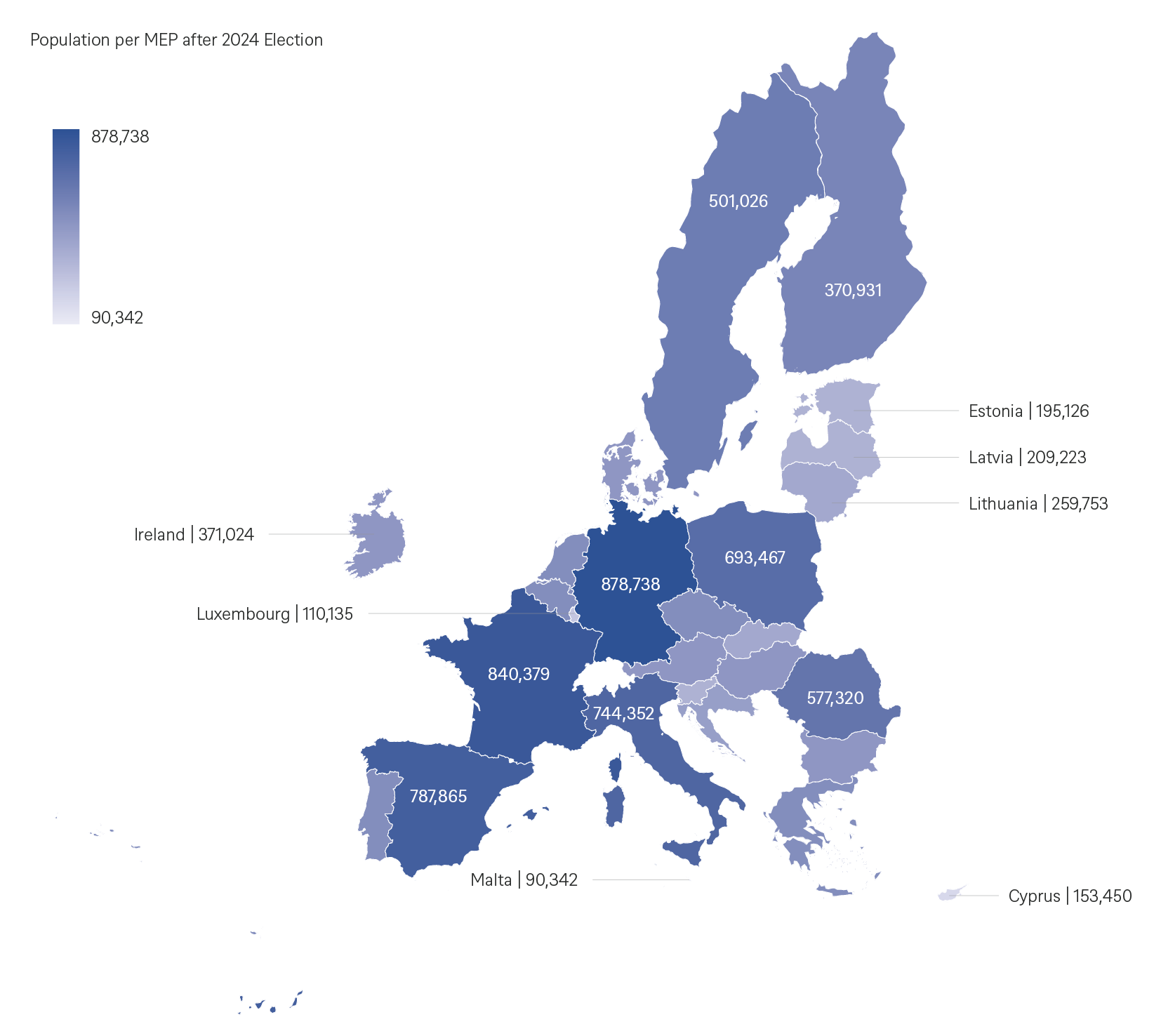- Home »
- Insights »
- Chart of the Week »
- Protest votes, the European way
A different way to look at Europe’s electoral landscape

Sources: Eurostat, DWS Investment GmbH as of 01/01/24
As we explained at length back in 2019, last time Europe voted, one under-appreciated aspect of elections to the (EP) is that they take place via national lists.[1] While all countries are using (various versions of) proportional representation, the details vary quite a bit between member states. For example, in small countries such as Malta and Luxembourg, one MEP typically represents around 100,000 residents. This compares to more than 840,000 residents per MEP for France and 880,000 for Germany.[2]
In reality, votes to the EP tend to be 27 largely uncorrelated national elections in the various member states. Specifically, they tend to be low-turn out protest votes against whichever parties are in power at the national level. But because power within the 27 is so split between different – usually coalition – governments at the national level (often including right-wing or far-right parties, or even led by them) these protest votes tend to cancel each other out at the European level, as do last minute changes in how political winds are blowing nationally.
Polling quality also varies widely across (and within) EU countries. Most seat projections at the European level tend to be based on national polling.[3] However, voters in some countries, such as Estonia, tend to differentiate very sharply depending on the rare occasions when pollsters ask them about their voting intentions specifically for the EP, partly because European elections there strongly center on each party’s lead candidate.[4] All of which means that while there can be big national level surprises, results for the EP as a whole tend to be predictably boring. They can still bring big changes for particular sectors or segments, but mainly through the interplay of European and national politics. For example, the election outcome will help determine the composition of the European Commission. The next EP is likely to be more skeptical on the current Commission’s European climate transformation agenda.
This has potential implications for areas such as European power and carbon prices. How large these will be, though, will also critically depend in how the elections influences politics at the national level, notably for the longevity of Germany’s unloved coalition government and the position of Emmanuel Macron in French policy making. In most policy areas, the EP's influence is now on an equal footing with the European Council (consisting of each member state's head of government).[5]But as far as elections to it are concerned, one of its main channels of influence is how polling surprises within each member state will influence national politics well beyond June 2024.




